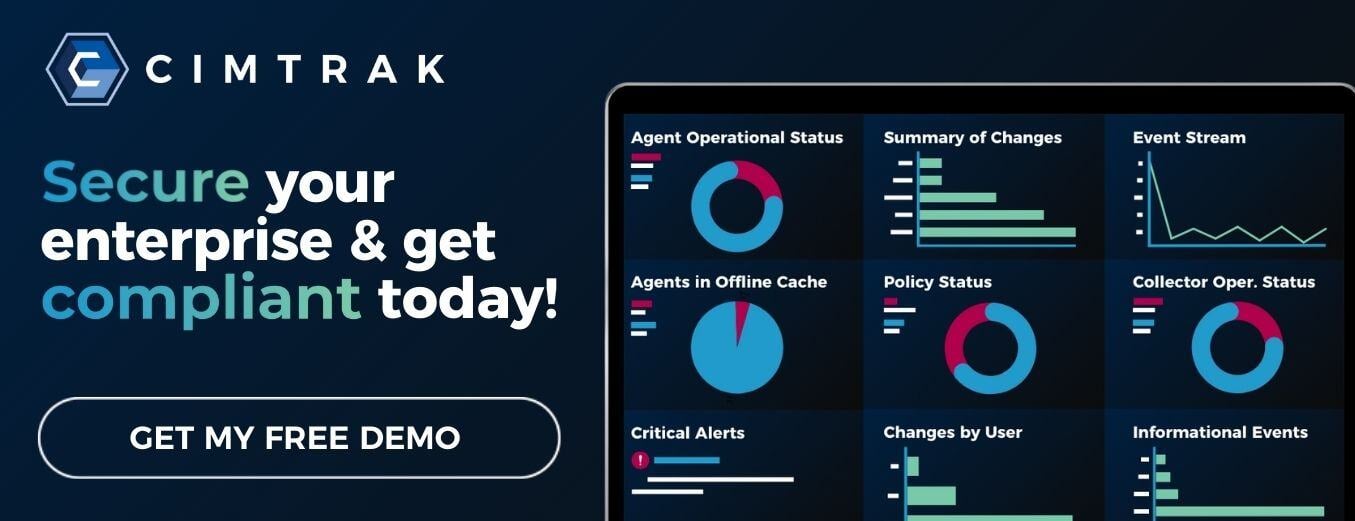Does your organization have a spare $14M to spend on fines, penalties, and revenue loss due to a non-compliance event?
Even if it does, senior leadership may not want to spend that amount of revenue on something that should be preventable.
Staying compliant with IT compliance standards may sound simple, but any IT professional knows that these regulations can be tricky to understand and trickier to meet. Even the most skilled IT teams armed with the best intentions of keeping their company and customer data secure can have something slip through the cracks. Especially with new regulations popping up every few years, this task only gets more challenging as time goes on.
Let’s examine some of the most common IT compliance standards. We’ll also provide information on determining which regulations apply to your business and cover some common challenges of meeting compliance standards in 2024.
What Are IT Compliance Standards?
Your business and department must adhere to all applicable IT compliance standards. But let’s take a step back and ask a foundational question:
What are IT compliance standards?
IT compliance standards are regulations set up to improve security, maintain your customers’ and employees’ trust, minimize the effect of data breaches, and more.
Related Read: The #1 Compliance Problem Nobody’s Talking About
In short, if your business manages any form of protected data about customers or employees, you must be aware of the standards affecting your organization. What consequences are associated with neglecting to meet the IT compliance standards required for your business? There are numerous consequences, including:
- Lost Sales: Downtime related to a breach can result in a dip in productivity, resulting in lost sales. Additionally, a significant breach can damage your organization’s reputation, losing customers and costing you more money to win new customers to offset those losses.
- Legal Fees: A significant breach can result in lawsuits from customers or employees affected by the breach. Legal fees are another consequence of failing to meet IT compliance standards.
- Data Recovery Costs: Your business will need to foot the bill for recovering any data lost in the breach resulting from your non-compliance.
- Fines: The fines you’ll be subject to will vary depending on the regulation you’ve failed to comply with and the severity of your violation. For example, a single HIPAA violation can cost your organization upwards of $250,000 per violation.
Understanding IT compliance standards is crucial to managing data in your organization successfully. Let’s cover the critical information related to the most common IT compliance standards, tips for identifying which regulations apply to your business, and discuss some modern challenges related to compliance standards.
Common IT Compliance Standards
Various government entities have established a number of IT compliance standards over the years. We will now examine some of the most common IT compliance standards, including the fundamentals of each standard and the industries it impacts. As a note, this list is not exhaustive, and your business may be impacted by standards not listed here.
GDPR
GDPR stands for General Data Protection Regulation. This regulation, which came into effect in 2018, was designed to protect the privacy of citizens in the European Union. Under this regulation, all EU citizens must consent before processing their data. There are additional specifications about how data must be transferred and secured under this standard.
Data impacted by GDPR include:
- Name
- Address
- Health data
- Political opinions
- Biometric data
- Racial or ethnic data
- Sexual orientation
- Web data
GDPR protects only EU citizens, so your organization must meet these standards only if you employ citizens of the EU or conduct business there.
HIPAA
HIPAA stands for the Health Insurance Portability and Accountability Act. Enacted in 1996, HIPAA seeks to protect sensitive health information and prevent that data from being disclosed without the patient’s consent.
Data impacted by HIPAA include:
- Health plan numbers
- Medical record numbers
- Biometric identifiers
- Identifiable photos
- Medical diagnoses
- Treatment information
- Medical test results
- Prescription information
Organizations most commonly affected by HIPAA are health plan providers, healthcare clearinghouses, hospitals, and more. However, if your business maintains any health records for employees or customers, you are also subject to HIPAA.
PCI DSS
PCI DSS stands for the Payment Card Industry Data Security Standard. This regulation refers to a set of twelve security requirements related to credit card and financial information.
The standards of PCI DSS are as follows, to quote:
- Install and Maintain Network Security Controls
- Apply Secure Configurations to All System Components
- Protect Stored Account Data
- Protect Cardholder Data with Strong Cryptography During Transmission Over Open, Public Networks
- Protect All Systems and Networks from Malicious Software
- Develop and Maintain Secure Systems and Software
- Restrict Access to System Components and Cardholder Data by Business Need to Know
- Identify Users and Authenticate Access to System Components
- Restrict Physical Access to Cardholder Data
- Log and Monitor All Access to System Components and Cardholder Data
- Test Security of Systems and Networks Regularly
- Support Information Security with Organizational Policies and Programs
If your business manages credit card transactions, you must be aware of and adhere to the requirements set forth by PCI DSS.
SOX
SOX stands for the Sarbanes-Oxley Act of 2002. This regulation is also referred to as the Public Company Accounting Reform and Investor Protection Act. This act applies to any publicly traded company in the United States and publicly traded foreign companies that do business in the United States.
SOX aims to protect shareholders from corporate accounting fraud or errors. Many of the regulations in this standard are related to financial reporting and an IT-specific component.
To comply with SOX, your IT department must comply with standards for storing financial records. Under SOX, financial records must be maintained for seven years.
NIST
NIST stands for the National Institute of Standards and Technology. NIST differs from the other standards on this list in that it is voluntary. This standard is a framework designed to help manage cybersecurity risks and reduce breaches.
Essentially, NIST provides your organization with best practices and guidelines you can use to reduce the risk of data-related issues and crises in your organization.
Identifying Which Regulations Apply
With all the regulations and compliance standards in existence, it can feel overwhelming to determine which ones apply to your business. Fortunately, there is an easy, three-step process you can follow to determine whether a regulation applies to your organization:
- Consider Your Industry:
Some regulations, such as HIPAA or FERPA (the Family Educational Rights and Privacy Act), chiefly affect specific industries. Research all regulations that apply specifically to your industry and ensure you are compliant. - Consider Your Clientele:
Even if no industry-specific regulations impact your company, you will still likely be required to comply with regulations related to your customer base or employee data. Research compliance standards for any countries in which you operate, employ, or sell. Consider what customer data you are storing and examine policies related to data of that nature. - Consider the Size of Your Business:
Depending on your company's type and size, you may face different standards than a publicly traded enterprise or a small business. Reexamine compliance standards as your business grows to ensure you are still compliant in light of any structural changes.
Once you have determined which regulations apply to your business, you will want to complete a full cybersecurity assessment. This assessment will help you determine how well you are currently meeting all applicable regulatory requirements, enabling you to make changes or improvements where necessary.
Modern Challenges of Compliance
Maintaining compliance is easier said than done. As the list of regulations continues to grow and as the business environment changes, this challenging task has only become more complex.
In the wake of the COVID-19 pandemic, the use of cloud-based applications and remote work has increased significantly. With employees accessing potentially sensitive customer and employee data from remote locations and private devices, it’s more important than ever for your organization to enact strict policies, procedures, and security measures to ensure you remain compliant.
In addition to adhering to strict IT compliance standards, you may choose to implement a System Integrity Assurance solution like CimTrak. This type of tool will empower your team to prevent unauthorized access, remediate unauthorized changes, and detect breaches in real-time.
Meet IT Compliance Standards With Ease
Meeting major regulatory requirements for your business and industry can be challenging.
The good news is that with the right understanding of current IT compliance standards that apply to your business, you have the basis of knowledge you need to set your team up for success.
But to maintain compliance, you need more than a knowledge of what regulations exist and how they apply to your business: You need a solution designed to help businesses like yours meet those standards time and time again.
The right solution will help you:
- protect your organization’s data
- help you gather evidence and documentation required to meet audits
- provide you with vital information regarding your security posture
- provide you with a simple dashboard where you can view all your compliance information
CimTrak’s compliance solution can offer you and your team all of these features and more. With CimTrak, you’ll be able to consistently achieve total IT compliance in less time, with less effort. To see how, request a customized demo of our software solution today.
Tags:
Compliance
October 15, 2024




